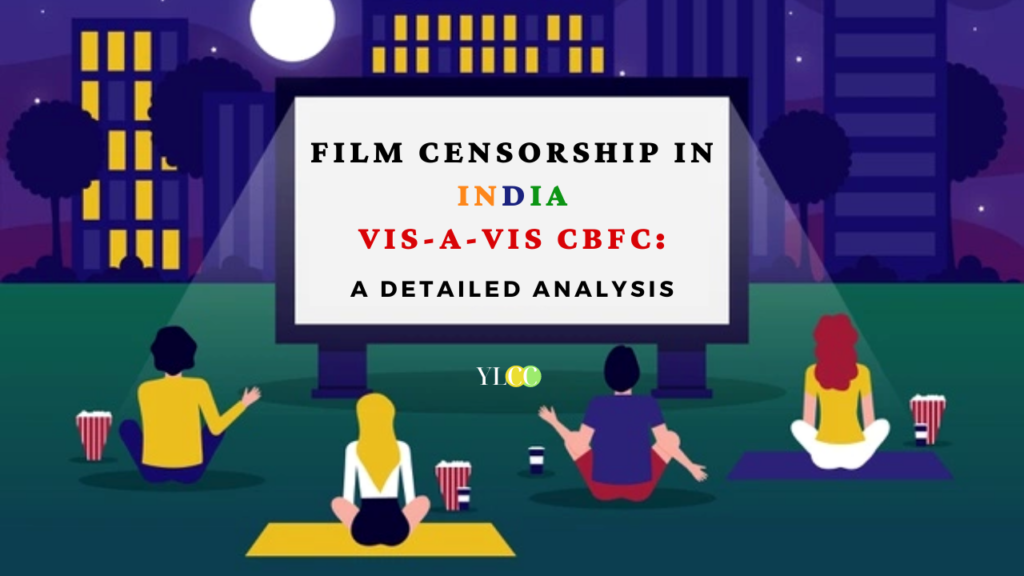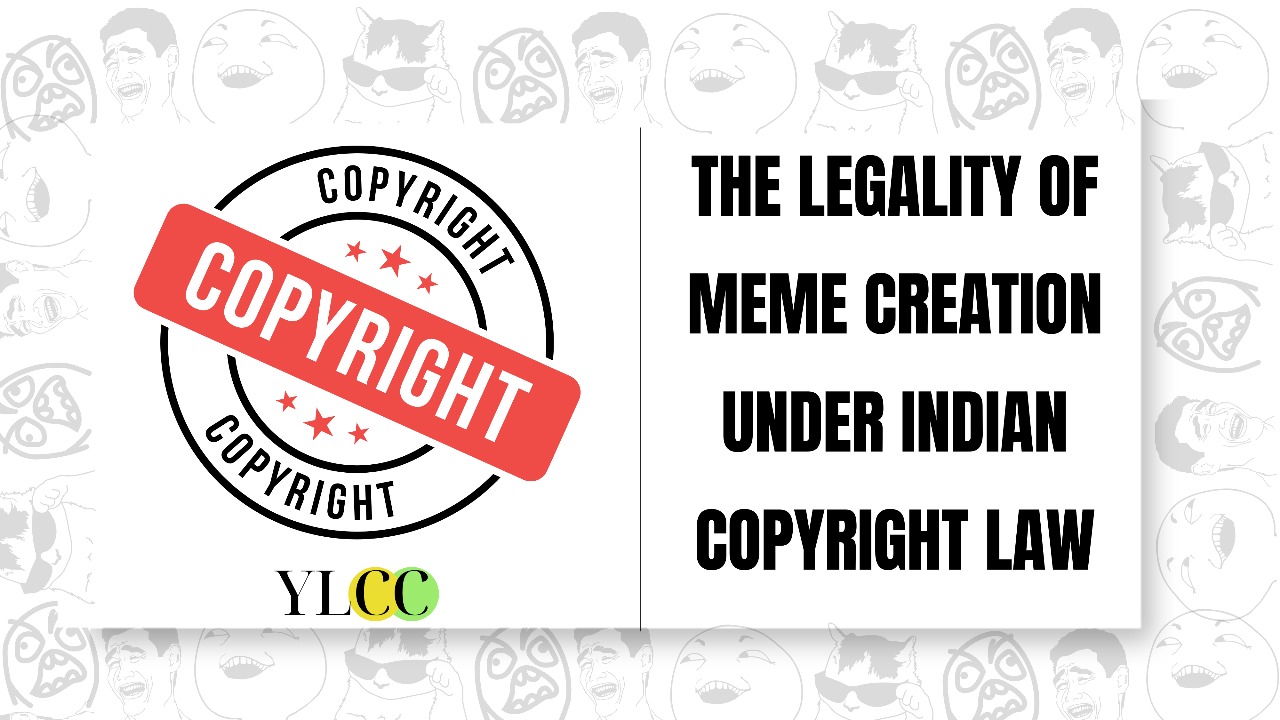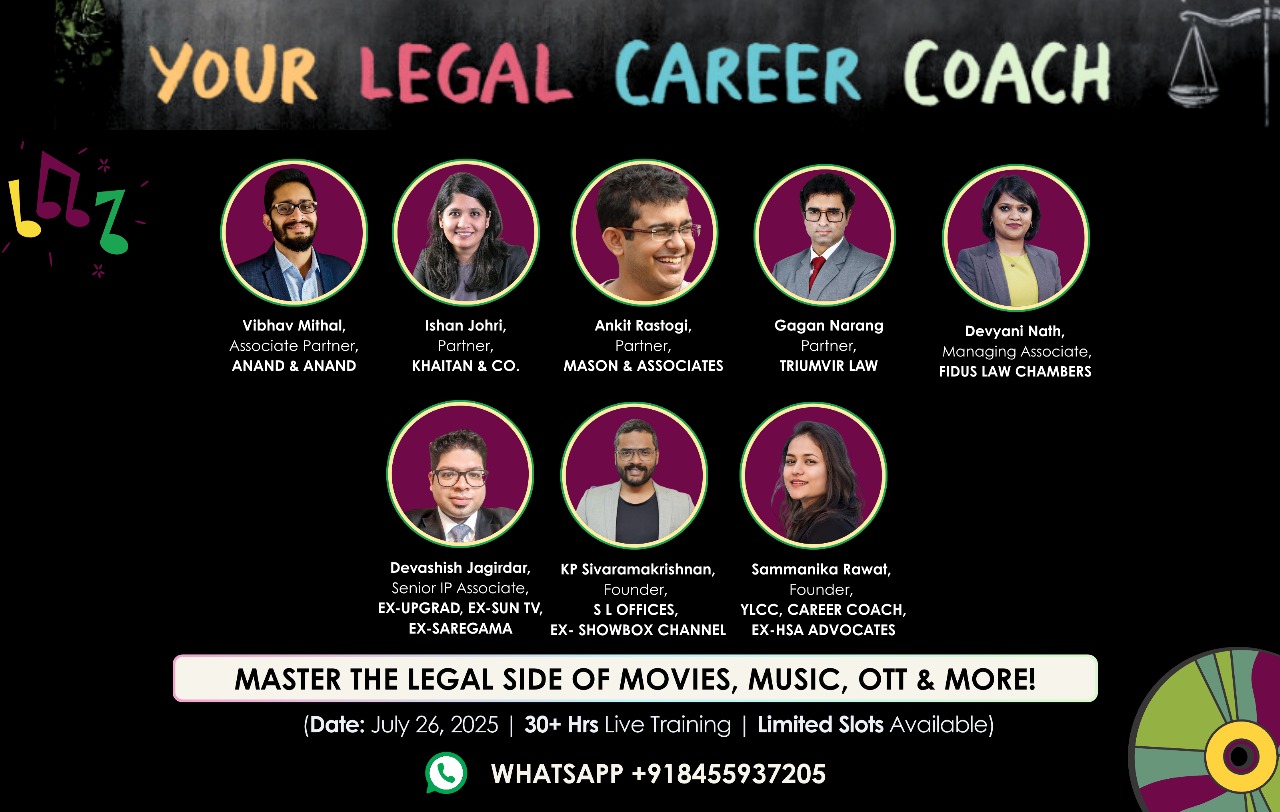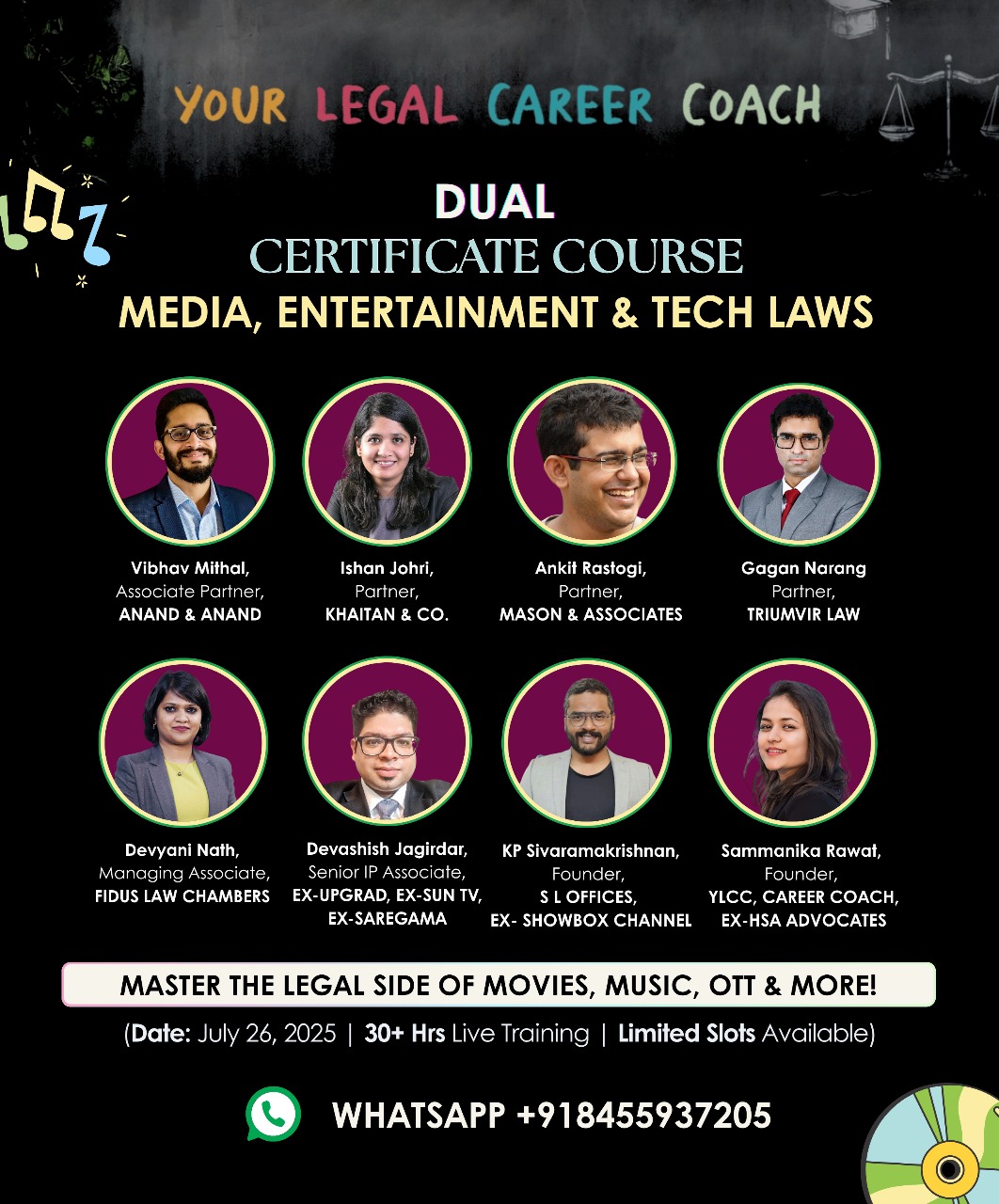
An Introduction:
Cinema, besides being a primary source of entertainment, is also a medium for communicating and disseminating knowledge. However, depending on the content that is being portrayed, this medium is capable of imbibing both positive and negative attitudes in people.
Censorship connotes the process of obstructing public views, expressions and ideologies because they may negatively impact a particular section of society, undermine moral values and cause disintegration of society. Censorship is necessary where the public ideology and filmmaker’s opinions may not align. The main objective is to preserve and restore the rights of both artists and the public by introducing a balancing mechanism.
Films, prior to release, are subject to the Censorship Act, 1952, which now governs the process of certification of films. By censoring the content of insensitive and controversial nature, the Board ensures that the films do not cross the boundaries of reasonable content and are well-within the prevailing moral standards of society.
This article discusses the role of the Central Board of Film Certification (CBFC) and the Cinematograph Act 1952 and related aspects by analysing the process of certification and its overall impact.
The Central Board of Film Certification:
Central Board of Film Certification (CBFC) is a statutory body under the Ministry of Information and Broadcasting, which regulates the public exhibition of films under the provisions of the Cinematograph Act 1952.[1] The Films in India are publicly screened once they are certified by the CBFC.
Under Section 5B(1) of the Cinematograph Act, CBFC, while granting certification, has the authority of examination and implementation of principles of sovereignty and integrity of India. The Board is also required to assess the work in the light of risk to the security of the State, friendly relations with foreign States, etc.
The Vision of CBFC is “to ensure the good and healthy entertainment” [2] which conforms to the provisions under Cinematograph Act 1952 and the Cinematograph (Certification) Rules 1983. The Board is guided by the principle of transparency for its stakeholders which include the filmmakers, media and public.
The Cinematograph Act, 1952:
The Cinematograph Act was enacted in 1920, seven years after the release of the first film in India “Raja Harishchandra” (1913). The Cinematograph Act of 1952 establishes a rigorous procedure of certifying films for public consumption- commercial films displayed in cinema halls and other public viewings. [3]The objective of the Act is to certify and regulate the public screening of films. The Board may also recommend changes if so required.
Film Certifications:
Categories of Certification:
The process of film scrutinization and granting certification is a lengthy procedure and the CBFC may take up to 68 days. The certification process takes place in accordance with the Cinematograph Act, 1952, The Cinematograph (Certification) Rules, 1983, and the guidelines issued by the Central Government under Section 5(B). At present, there are 4 categories under which the films are certified:
- U (Unrestricted Public Exhibition):
The films with ‘U’ Certification indicate that these can be universally (by the whole public, regardless of age) viewed irrespective of age. The theme of the movie is based on some universal content like education, family, morals, etc. However, these films may display some vulgarity but without, excessive violence, nudity or sexual content.
- A (Restricted to Adult Audiences):
The films with ‘U/A’ Certification indicates that these are available to people aged 18/18+ These films display violence, sexual acts, abusive language, etc. These movies are usually Re-certified for TV and video.
- U/A (Unrestricted public exhibition, but with parental discretion required children below 12 years):
The films with ‘U/A’ Certification in indicating that these may be watched by children under 12, but only on parental consent and guidance. These types of movies may have certain adult content, but not too strong. The content is mildly violent, vulgar and sexual in nature and the abusive language is censored/muted.
- S (restricted to special class of persons):
The films with ‘S’ Certification are restricted to a special class of people, who are professionals like doctors, lawyers etc.
The Board has the option to categorically reject certification if no certification can be granted in accordance with the above four categories. It shall occasionally conduct seminars (film critics, writers, and or people involved in film industries along with national surveys to observe the public reaction while drafting the guidelines for certifying the films.
2. Objectives of Certification:
2.1 Under Section 5B (1), CBFC must examine the movies on the grounds of principles of sovereignty and integrity of India, security, relations with other countries, public order, morality decency, contempt of court, defamation, and the likelihood of inciting the commission of any offence.
2.2 Under Section 5B (2), CBFC has to consider the following guidelines while sanctioning films:
- The medium of the film is in conformation with the values of the society.
- The artistic expression or creative liberty must not be unnecessarily curtailed.
- The certification must be perceptive to social needs.
- Must not be provocative, vulgar or offensive.
- The film must foster clean and healthy entertainment.
- The film must promote decency, aesthetic values and be of good cinematic standards.
- The CFC must examine and critic the movies in their entirety rather than a one-sighted focus. Further, the judgement should be based, keeping in mind that it does not hurt the sentiments of any particular community or morality of people.
- The film must not breach any Guideline of certification.
The Judicial Perception to Censorship:
- In Raj Kapoor v. State,[4] the Supreme Court held that if a film has been certified by the censor board under Section 6 of the Cinematography Act, 1952, the court must not overlook the decision since, the expert committee determines the suitability of films, keeping the audience in view. In the court’s opinion, the expert committee had a better knowledge and understanding of the principal elements of obscenity.
- In K.A. Abbas v. Union of India,[5] the Delhi High Court elucidated upon the principles that are followed in major Censorship-related case law, Srishti School of Art, Design and Technology v. Chairman, CBFC.[6] The emphasis was laid on the following essentials:
- Judgement should be based on reasonable standards.
- The Petitioner, Government has the onus to furnish the proof of obscenity.
- The Judgement must be made on the entirety of film to be tested against obscenity and violation of Cinematograph guidelines
- The Petitioners must prove the direct or proximate relation of the film to a threat to public order.
- The courts must not totally disregard CBFC’s adjudication regarding film certification unless it is unreasonable.[7]
The Supreme Court observed, “Movie is the legitimate and the most important medium in which issues of general concern can be treated” and struck down the ban.
- In S. Rangarajan v. P. Jagjivan Ram[8], the contention raised was whether a particular Tamil Film should be granted the “U” certificate or not. The film was construed to deprecate the exploitation of people on caste consideration. However, the Supreme Court clarified that as long as there was no utterance or explicit indication which shows that the film attempted to overthrow the government or disintegrate the nation, the ‘U’ certificate could be granted to that film.
- In Anand Patwardhan v. Cent. Bd. of Film Certification,[9]the petitioner, was directed by the censor board to make two cuts and add one to receive a ‘U’ certificate for his movie “War and Peace.” The petition was filed against the Censor Board. The Court observed that the directions were given only to harass the filmmaker.
- In Life Insurance Corporation of India v. Prof. Manubhai D. Shah,[10] the Court ruled that merely a film/show being critical of the government, cannot be banned.
Censorship of Films curtailing Freedom of Speech:
In a country like India, where democracy is modern and liberal, the freedom of speech and expression under Article 19 (1) (a) is an absolute cornerstone. A closer observation of the censorship mechanism reveals a number of ugly realities. Films are a valuable medium of speech and expression,[11] with the ability to contribute towards the area of good governance, rule of law and democracy concerns.[12] Movies play a crucial role not only in terms of entertainment but also in critiquing the actions of those with power and authority. This can make movies, subject to censorship or ban. Unfortunately, in certain instances, the censorship in India is stringent as well as politically motivated. The standing notion seems to be that as long as movies are commercially successful and abide by the customary notion of entertainment, there is no problem.[13] As soon as filmmakers voice a strong contrary political opinion, the censor’s scissors are applied arbitrarily.[14] Films like ‘Final Solution’, ‘The Da Vinci Code’, ‘Ram ke Naam’ were restricted for the so-called public interest. A few more political gimmicks were veiled by censorships:
- Gulzar’s ‘Aandhi’ was banned because it depicted the corrupt practices of Indira Gandhi.
- ‘Kissa Kursi Ka’ a prime visual depiction of political spoof was a satire on Indira and Sanjay Gandhi’s power was rejected by the Censor Board.
- ‘Rang de Basanti’ got into trouble when Aamir Khan supported those, displaced during the Sardar Sarovar Dam project.
Needless to mention, there is a strong ground to uphold the freedom of speech and expression in the current scenario of repression and censorship. Though the Supreme Court explicitly retains the position that reasonableness in relation to facts and circumstances must be examined, CBFC nevertheless functions according to its own discretion and autonomy. The limitation must satisfy the following for it to be valid:
- The restriction must be imposed by a valid law.
- The restriction must be reasonable.
- The restriction must be proximately related to the purpose of article 19 (2).
The Principles Guiding the Censorship Mechanism:
The Supreme Court of India has framed several tests to examine the artistic, literary or theatrical work. These tests are not restricted to courts but applicable to the censor boards as well. These tests are:
- Test of ‘Likely or Target Audience’:
The censor board while scrutinising the content, must consider the ‘perceptive approach’ of the target audience and not those individuals who are driven by their primitive mindsets. In Samaresh Bose v. Amal Mitra[15], the Supreme court held that while examining the issue of obscenity “the judge should place himself in the position of a reader of every age group in whose hands the book is likely to fall and should try to appreciate what kind of possible influence the book is likely to have in the minds of a reader.”[16] In Director General, Directorate General of Doordarshan v. Anand Patwardhan the Supreme Court formulated the ‘objectionable material test’. Under this test, the judge should consider whether:
- A general person, “applying contemporary community standards” would find the work in its entirety, to be appealing to a prurient interest;
- The work depicts/describes, sexual conduct in an offensive manner, as defined by the current state law; and
- The work, taken as a whole lacks serious literary, artistic, political or scientific value.[17]
- Nudity and sex are not always ‘obscene’:
‘Nudity’ has a wide ambit and under nudity, “obscenity” is quite a narrow term. They cannot be used synonymously. Every nude work does not depict obscenity. The Supreme Court in Ranjeet D. Udeshi v. the State of Maharashtra defined obscenity as “the quality of being obscene which means offensive of decency; lewd, filthy and repulsive.”[18] In the famous Bandit Queen Case, the Gujjar community objected to the film screening. Further, the petition alleging that some scenes blemished womanhood and the rape scene depicted that the Gujjar community was morally corrupted. The Apex Court drew a line between obscenity and nudity. Furthermore, rejected the petitioner’s contention that frontal or apparent nudity was indecent under Article 19(2) and Section 5(B) of the Cinematograph Act of 1952. The court clarified that the intention behind the ‘frontal nudity’ scene of the rape victim was not to encourage or depict licentious or lewd feelings but to express disgust against the perpetrators.
- Judging the depiction and in accordance to ‘Contemporary-National Standards’:
Before censoring a particular movie, documentary or any work, the current contemporary values and morals, and national standards must be given due regard and consideration. Section 5-B, Clause I(a) of the Cinematograph Act, 1952, mentions the principles in accordance to which the Censor Board grants certificates and sanctions films for public exhibition. In the S. Rangarajan case[19], the Supreme Court opined that the censor boards must not unreasonably impose orthodoxy and conservative outlooks. They must be responsive to present social changes.
- Test of a ‘Ordinary Prudent Man’:
A film/movie must be judged through the lens of an ordinarily prudent man with and prudent mindset, and not an irrational and hypersensitive mindset.
- Films must be ‘judged as a whole’:
In judging the work to be appropriate for exhibition, one must have a holistic approach wherein analysis is based on the work as a whole and not on the basis of few isolated scenes.[20] Similar reasoning was observed in Anand Partwardhan Case, where the Supreme Court held that the documentary film in the case was to be judged in its entirety and the message it seeks to convey on a whole. The film portrayed evils of the society and did not seem to cater to the prurient interests of any person.
- Pre-Censorship:
In the K.A. Abbas case, the court had held that pre-censorship has a crucial role where motion pictures are involved. It is evidence of its desirability in the entertainment sector. Furthermore, the court referred to the Khosla Committee Report and maintained that pre-censorship is prevalent in almost all countries. In the Ministry of Information Broadcasting, Govt. of India v. Cricket Association of Bengal,[21] the Supreme Court supported pre-censorship and justified its applicability in the visual media.
Controversies in the Light of Contemporary Films:
- The film ‘War and Peace’ displayed scenes of nuclear testing and the 9/11 attacks. The filmmakers were directed to remove 21 scenes to receive certification for the final release. The filmmaker, Anand Patwardhan protested by stating that the scenes which were ordered to be removed are too ridiculous to be held up in the court. The changes will only end the freedom of expression in the Indian media. Ultimately, the court deemed the cuts to be unconstitutional and the film was screened without any edit.
- The film ‘Gulabi Aaina’ based on a transsexual Indian (produced and directed by Sridhar Rangayan) was banned by the Censor board in 2003, on the grounds of vulgarity and offensive to the feelings of communities and society. However, even under the tag of a ban, the film was tremendously applauded and won various accolades at the international level for its strong message towards the transsexual community.
- The documentary ‘Final solution’, loosely depicting religious duels between Hindu and Muslims, was banned. The movie was based on the 2002 clashes of Gujarat where around 1100 people died. The censor boards defended the ban by stating that it could incite violence and trigger riots in communities.
- The movie ‘The Girl With The Dragon Tattoo’ was ordered to make five cuts by the CBFC. The Censor board demanded the cuts for showing rape scenes and nudity. According to the director, if the cuts were made, it would leave nothing for the public to watch.
- “Udta Punjab” landed itself in censorship trouble with the CBFC. It led to the re-examination of censorship morals in India. The objective of the film was to showcase the drug problems and naturally it had numerous drug scenes and abusive language. The CBFC listed out 13 pointers and 94 cuts, including deletion of scenes which named of Punjab.
- The movie “Lipstick Under My Burkha’ is also one of the most controversial movies in the history of censorship. The CBFC rejected certification and distribution by stating, “the story is tending to ladies’ fantasy”. They opined that the sexual scenes, abusive language, pornography in form of audio will affect certain sections of society.
Conclusion:
Despite the instances of overstepping authority and abusing discretion, the fact that the CBFC makes content appropriate for consumption cannot be denied. The regulations create a strong obligation on content creators to make sure that their productions do not have excessive negative ramifications on society. At the same time, it is also important to reiterate that the CBFC should perform its responsibilities with some restraint and keep an open mind instead of adopting a despotic approach to censorship. In conclusion, the objective of film censorship must not be Moral-policing, rather it must build a safeguard to shield the audience against the negative impact of toxic content.
[1] https://www.cbfcindia.gov.in/main/about-us.html.
[2] Id.
[3] Shreya Juyal, What is the Cinematograph Act amendment that’s becoming a controversy now, D. CHRONICLE, (Jul 8, 2021, 10:25 pm) https://www.deccanchronicle.com/nation/current-affairs/080721/explainer-cinematograph-act-amendment-all-that-you-need-to-know.html.
[4] Raj Kapoor v. State, (1980) 1 SCC 43.
[5] K.A. Abbas v. Union of India, (1970) 2 SCC 780.
[6] Srishti School of Art. Design & Technology v. Chairperson, Central Board of Film Certification, 2011 SCC OnLine Del 1234.
[7]Trishi Gupta, Media autonomy and Censorship: a study in Indian Perspective, SHODH GANGA (2014) https://shodhganga.inflibnet.ac.in/bitstream/10603/80570/9/09_chapter%205.pdf.
[8] S. Rangarajan v. P. Jagjivan Ram, (1989) 2 SCC 574.
[9] Anand Patwardhan v. Cent. Bd. of Film Certification (2006) 8 SCC 433.
[10] LIC v. Manubhai D. Shah (Prof.), (1992) 3 SCC 637.
[11] Arushi Dokania, A Critical Overview of Film Censorship in India vis-à-vis Freedom of speech SUPR. AMI., May 2021, at 246.
[12] Govindu, V., Contradictions in Freedom of Speech and Expression, 72 TIJPS, vol. 72, 641–650., www.jstor.org/stable/41858840.
[13] Dokania, supra note 11, at 246.
[14] Dokania, supra note 11, at 246.
[15] Samaresh Bose v. Amal Mitra (1985) 4 SCC 289 : AIR 1986 SC 967.
[16] Id (SCC) 692-94, para 12.
[17] Id para. 32.
[18] Ranjeet D. Udeshi v. State of Maharashtra, AIR 1965 SC 881, 885, para 7 : (1965) I SCR 65.
[19] (1989) 2 SCC 574.
[20]s S. Rangarajan v. P. Jagjivan Ram, (1989) 2 SCC 574.
[21] Ministry of Information Broadcasting, Govt. of India v. Cricket Association of Bengal, (1995) 2 SCC 161.
YLCC would like to thank Harshima Vijaivergia for her valuable inputs in this article.







